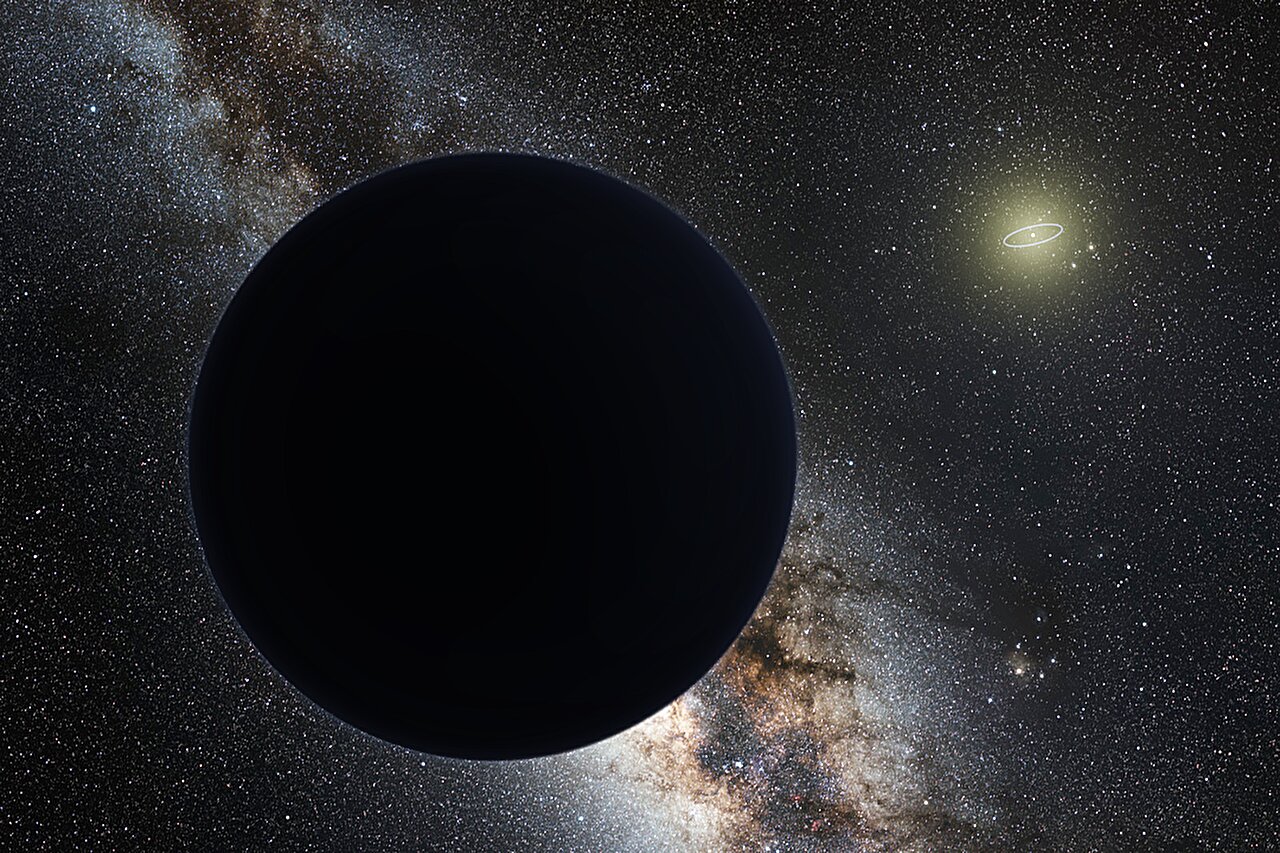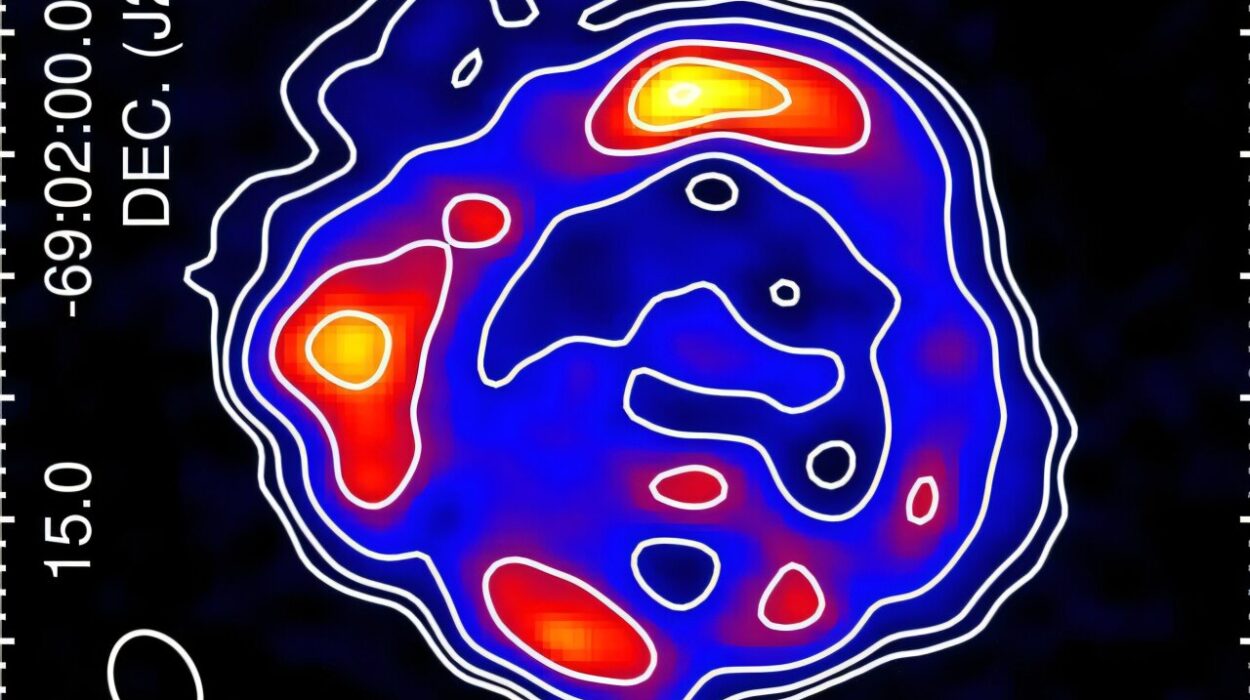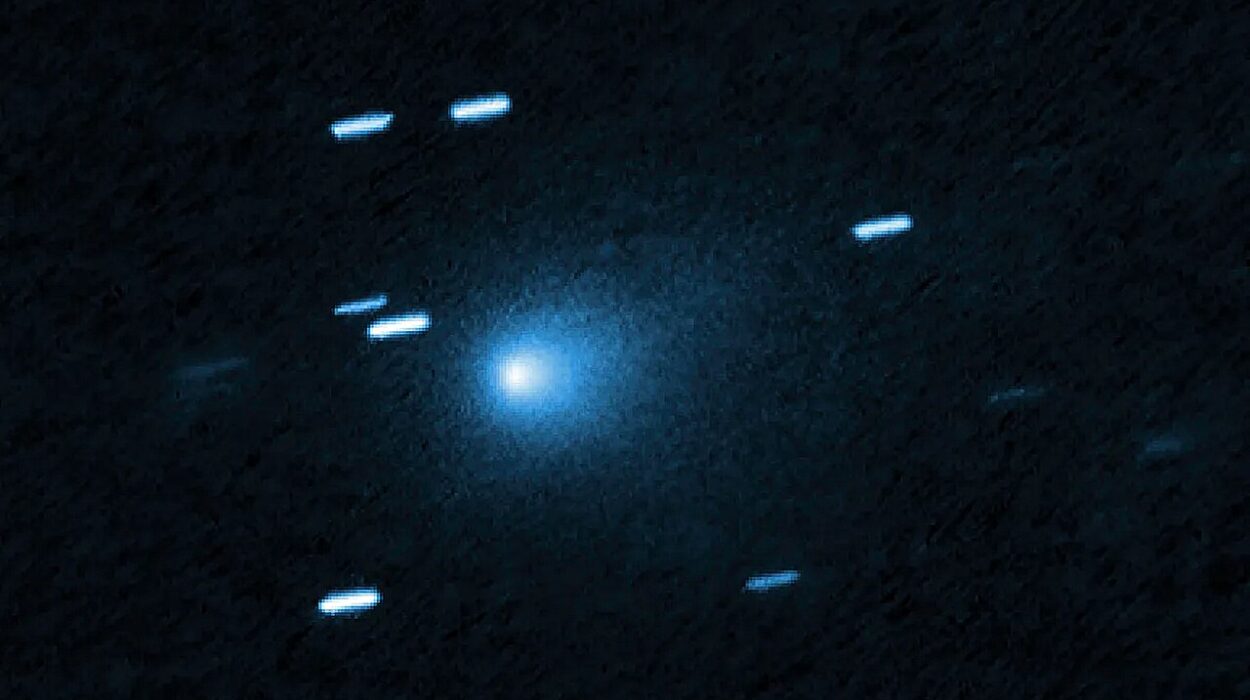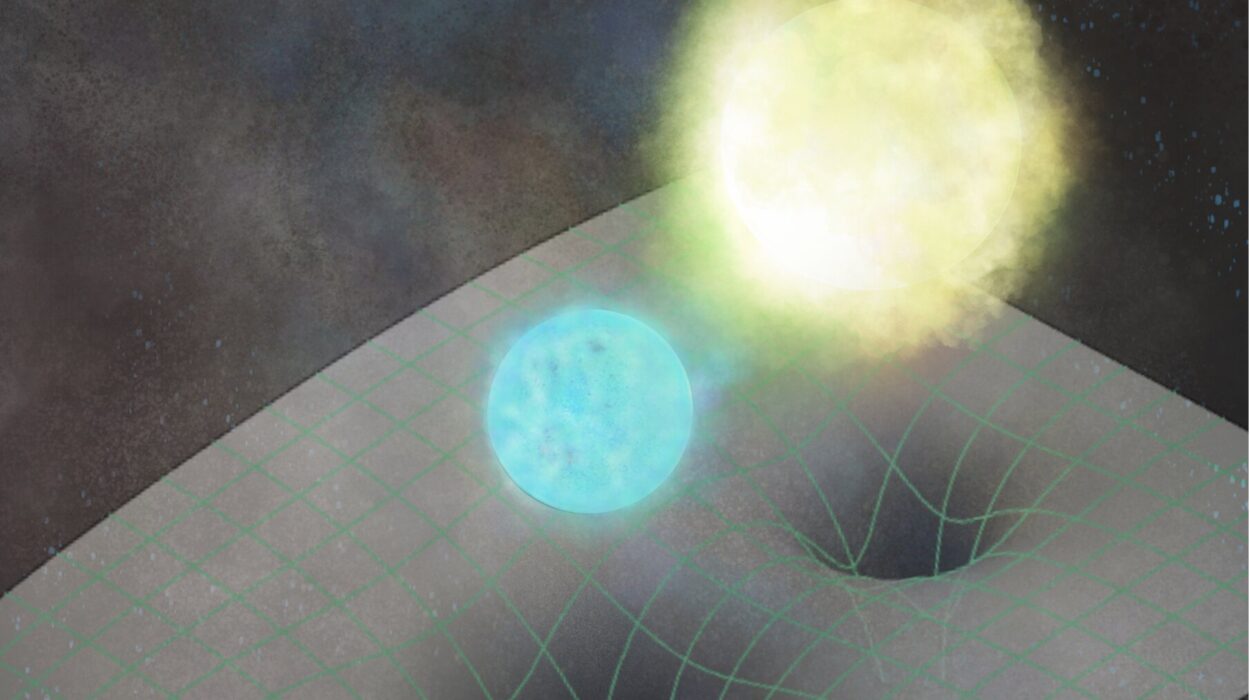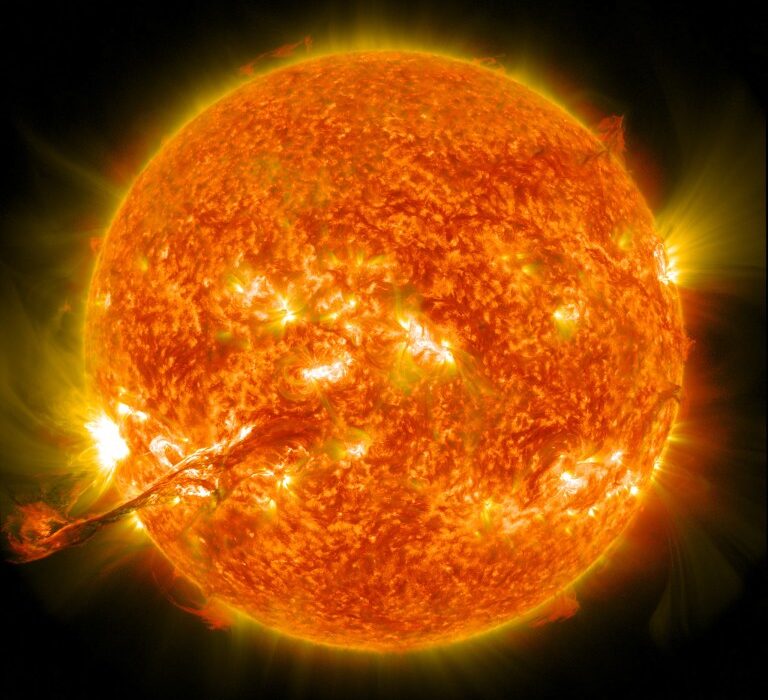For years, it has haunted the minds of astronomers like a ghost in the void—Planet Nine, the mysterious, massive world suspected of lurking in the frigid reaches of our solar system. It has eluded telescopic searches, slipped through the nets of our greatest instruments, and left only subtle traces in the celestial dance of distant objects. But now, in a bold twist worthy of science fiction, researchers have taken a new approach: instead of trying to see this planetary phantom, they’re trying to feel its warmth.
In a discovery that could mark a pivotal turning point in the hunt for Planet Nine, a team of astronomers led by Amos Chen of the National Tsing Hua University in Taiwan has identified two potential candidates using a radically different technique—one that relies not on light reflected from the sun, but on the gentle infrared glow that such a planet would naturally emit.
And the results are tantalizing.
A cosmic oddity in the Kuiper Belt sparks suspicion
The story begins far beyond Neptune, in the icy outskirts of our solar system, in a vast and sparsely populated region known as the Kuiper Belt. It’s home to a menagerie of small, frozen worlds—Pluto among them—that orbit in the deep cold, hundreds of times farther from the sun than Earth.
But astronomers noticed something strange. Certain Kuiper Belt Objects (KBOs), instead of being scattered randomly, seemed to bunch up in oddly similar orbits. Their paths were tilted and elongated in ways that defied chance and defied existing explanations.
Something unseen, something massive, seemed to be tugging on them.
For years, the leading theory has been that a giant planet—roughly 5 to 10 times the mass of Earth—is hiding out there, herding these distant objects with its gravity. Nicknamed Planet Nine, this hypothetical world would orbit between 400 and 800 times farther from the sun than Earth does, so distant that it could take thousands of years to complete a single revolution.
But finding it has proven nearly impossible.
Why we haven’t found Planet Nine—until now?
The challenge is one of light—or rather, the lack of it. Telescopes that rely on reflected sunlight face a grim mathematical reality. The amount of light a planet reflects decreases with the square of the distance from the sun, and then again with the square of the distance to Earth. That means reflected sunlight dims by a factor of 16 for every doubling of distance. At hundreds of astronomical units (AU) away, Planet Nine would be almost invisible to even our most powerful optical telescopes.
That’s where the brilliance of Chen’s approach shines.
Rather than hunting for reflected light, Chen’s team focused on thermal radiation—the heat signature that all objects emit, even cold and distant ones. This approach uses the laws of physics to its advantage. Unlike reflected light, thermal emission fades much more slowly with distance. When you double the distance from the source, infrared brightness only decreases by a factor of four, not sixteen.
That difference could be the key to solving one of astronomy’s greatest modern mysteries.
Eyes in the sky: using AKARI to search for heat in the cold
To test their hypothesis, the team turned to a unique tool: AKARI, a Japanese infrared space telescope launched in 2006. Though lesser known than giants like Hubble or JWST, AKARI conducted the most sensitive all-sky survey in far-infrared wavelengths during its mission—making it the perfect candidate to find the faint heat signature of a distant, frozen planet.
Free from Earth’s atmosphere, which blurs and absorbs infrared signals, AKARI scanned the heavens for the soft warmth of cold objects. And though the telescope had long since ceased operations, its archived data remained untouched—a cosmic time capsule brimming with possibilities.
Using models of KBO orbits and simulations of how Planet Nine’s gravity would shape them, the researchers narrowed their search to a region of sky where Planet Nine was most likely to be hiding. There, amid the thousands of stars and galaxies captured by AKARI, they began their painstaking hunt.
Sifting through the noise to find a whisper of heat
The challenge was enormous. Infrared images are crowded and messy. Stars and galaxies emit in the same wavelengths. Cosmic rays leave behind false signals. Noise from the telescope itself can mimic faint sources. But Chen’s team was undeterred.
They knew what to look for. Unlike distant galaxies or static stars, Planet Nine should move—barely, slowly, but detectably—across the sky. Not enough to shift noticeably in a day, but over months, its tiny motion should leave a trail through multiple observations.
So the team cross-referenced AKARI’s time-stamped data, looking for faint objects in the predicted region that appeared stationary on short timescales but drifted subtly over time. After eliminating known sources and false positives, two objects remained.
Two candidates, glowing faintly in the far infrared, sitting exactly where theory said Planet Nine might be.
The most promising leads yet
While Chen and his colleagues are careful not to declare victory just yet, these two candidates represent the most compelling leads in the decades-long hunt for Planet Nine. Both objects emit precisely the kind of thermal radiation expected from a cold, Neptune-sized world lurking at several hundred AU from the sun. And both fall within the theoretical orbital corridor predicted by simulations.
Yet mysteries remain. The key question now is: are they really moving?
Follow-up observations with more sensitive instruments—such as the upcoming Nancy Grace Roman Space Telescope, or even a targeted campaign using JWST—could detect their motion and determine whether these objects are truly part of our solar system, or just distant galaxies that happen to be masquerading as planetary imposters.
If either object is confirmed to be moving along an orbit consistent with a solar system body, the implications will be staggering.
A new world would rewrite the textbooks
The discovery of Planet Nine would not merely add another member to the planetary family—it would fundamentally reshape our understanding of the solar system’s formation and evolution.
How did such a massive object end up so far from the sun? Was it flung outward during the violent early days of planetary migration? Was it captured from another star system during the sun’s birth cluster? Or is it a relic of a long-lost population of solar system giants that once orbited between Uranus and Neptune?
Planet Nine could hold answers to questions we didn’t even know to ask. Its presence might explain the mysterious tilts of planetary axes, the strange asymmetry in comet distributions, or even the sudden appearance of interstellar visitors like ‘Oumuamua.
And more philosophically, it would be a humbling reminder of how much remains hidden in our own celestial backyard.
A lesson in how we search—and why it matters
Beyond the science, this story is a testament to creativity and perseverance. For decades, astronomers scanned the skies for the glint of sunlight off a cold rock. It took a shift in perspective—a willingness to look not for what we see, but for what we feel—to uncover something potentially revolutionary.
“Sometimes,” as one of the team members remarked, “you don’t find a planet by chasing its light. Sometimes you find it by tracing its warmth across the stars.”
In a universe that often hides its secrets in plain sight, this new approach is a powerful reminder that the frontier of discovery isn’t always ahead of us—it’s sometimes beside us, waiting patiently to be seen differently.
The search continues, with hope
The road ahead is long. These candidates may still turn out to be cosmic illusions. But hope is real. And it burns as quietly and persistently as the infrared glow of a frozen planet drifting through the dark.
Somewhere out there—beyond the familiar orbits of the eight known planets, past the reach of Voyager, in the stillness of the Kuiper night—a distant world may be waiting for us to notice its gentle heat. Not a spotlight, but an ember in the void. And if we find it, it won’t just be a new planet.
It will be the triumph of human curiosity, ingenuity, and imagination.
Reference: Amos Y.A. Chen et al, A far-infrared search for planet nine using AKARI all-sky survey, Publications of the Astronomical Society of Australia (2025). DOI: 10.1017/pasa.2025.10037
